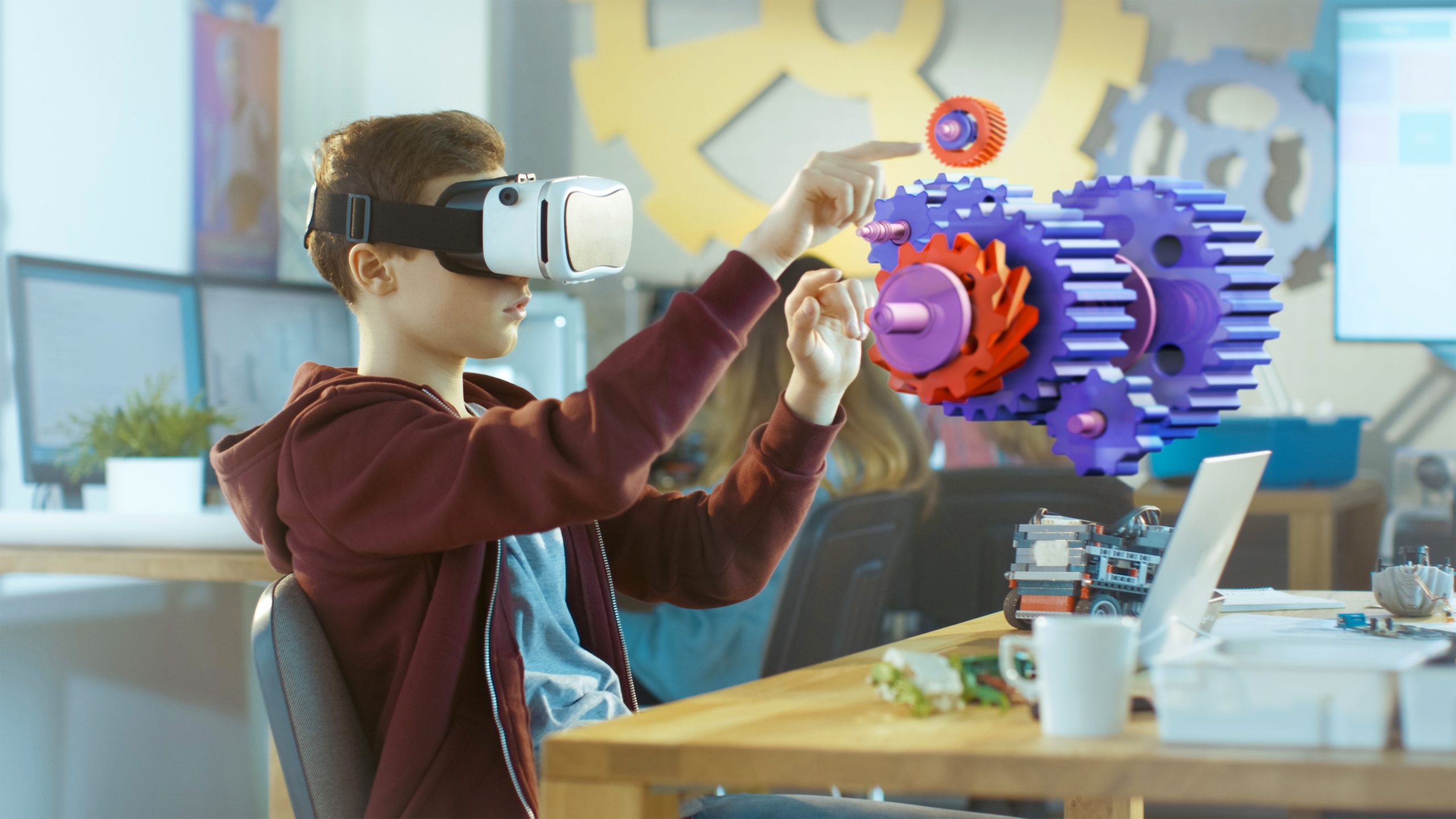Jun 25, 2024
Introduction
The integration of Augmented Reality (AR) and Virtual Reality (VR) in e-learning is transforming how students learn, engage, and interact with educational content. These cutting-edge technologies offer immersive and interactive experiences that have the potential to revolutionize traditional teaching methods. Let's delve into the role of AR and VR solutions in e-learning, exploring their benefits, challenges, and future prospects.
Revolutionize Education with VR and AR
Evolution of AR & VR Solutions in E-Learning
The development of AR and VR software has empowered educators to create more dynamic and interactive learning experiences for students. These technologies simplify the understanding of complex concepts and improve information retention. AR enables students to overlay digital images and information onto the physical world, while VR creates fully simulated environments for exploration. This hands-on approach to learning surpasses traditional textbook methods.
As the demand for online education continues to grow, integrating AR and VR into e-learning becomes increasingly crucial. These technologies allow students to conduct experiments in simulated labs and experience historical events in an immersive manner. By integrating AR and VR into e-learning platforms, educators can address various learning styles and preferences, creating a more personalized and adaptive learning experience. The evolution of AR and VR in e-learning has unlocked new opportunities for innovative and engaging educational experiences, shaping the future of online education.
The ongoing integration of AR and VR holds the potential to make online learning more engaging and effective.
Benefits of AR & VR Solutions in E-Learning
Enhanced Learning Experience
AR and VR significantly enhance the learning experience by allowing students to engage with course materials in ways that traditional methods cannot. Students can explore virtual simulations and 3D models or participate in virtual reality field trips to experience different cultures and environments firsthand. This hands-on approach helps improve knowledge retention and understanding, making the learning process more engaging and effective.
Improved Knowledge Retention
The immersive nature of AR and VR helps students better understand and retain information compared to traditional learning methods. By providing a multi-sensory learning experience, these technologies cater to visual, kinesthetic, and auditory learners, making education more effective and engaging.
Enhancing Student Engagement through Immersive Experiences
AR and VR technologies revolutionize how students experience immersive learning on e-learning platforms. These tools enable students to step into virtual worlds, manipulate objects, and interact with content in a way that enhances retention and understanding. By catering to different types of learners, AR and VR create a more interactive and engaging educational environment.
The Future of AR & VR Solutions in E-Learning
The future of AR and VR in e-learning is promising. AR allows users to overlay digital information onto the real world, while VR transports users to virtual environments where they can explore and interact with content in unprecedented ways. According to Grand View Research, the AR and VR market is expected to reach $597.54 billion by 2030.
By integrating AR and VR into e-learning platforms, educators can create dynamic learning experiences tailored to individual students' needs. These technologies bridge the gap between theoretical knowledge and real-world application. For example, biology students can use AR to visualize and explore complex biological processes in 3D, while engineering students can use VR to simulate and test their designs in a virtual environment.
Are You Prepared to Improve the Way You Learn Online?
To fully leverage AR and VR in e-learning, teachers and instructional designers must be prepared to adapt and advance their instructional methods. They need to optimize these technologies' impact on learning outcomes and be willing to modify their lesson plans to meet students' requirements and preferences.
Ultimately, embracing AR and VR in education can lead to more engaging and productive learning experiences for students of all ages and backgrounds. These technologies can make learning more interactive and personalized, allowing learners to actively engage with the content and apply their knowledge in real-world scenarios.
Conclusion
The future of AR and VR in education holds exciting possibilities, from personalized learning experiences to virtual mentorship programs. By embracing these tools and exploring their potential, we pave the way for a more immersive, engaging, and effective learning experience. The future of education is bright, with AR and VR at the forefront of revolutionizing how we teach and learn.





